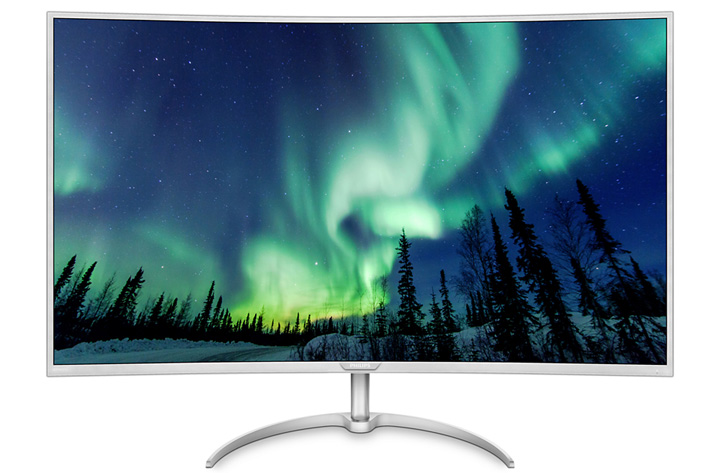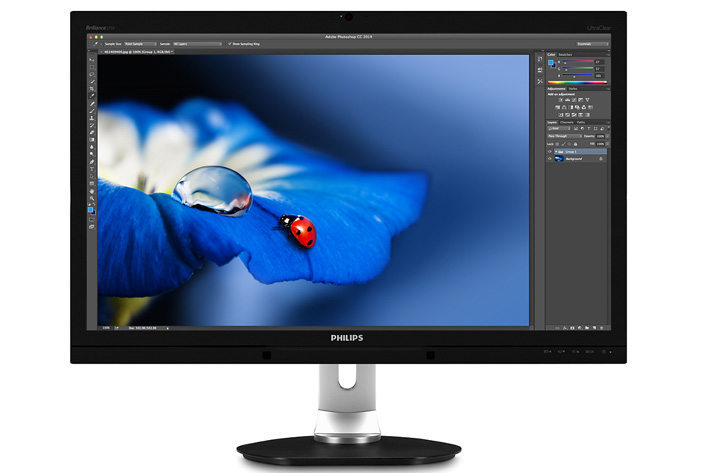
When it comes to monitors, Philips has a word to say. MMD, brand license partner for Philips monitors worldwide, offers some advice for photographers and graphic artists looking for their next monitor.
The few pointers put together by MMD also apply to graphic artists looking for a monitor, and videographers would not go wrong reading through the advice. With some extra notes I added to the information provided by MMD, this is a quick guide to help you choose the right monitor.
The first element to look for in a monitor, suggests the document, is color. According to MMD, “in a professional environment, on-screen colours must be as close a match as possible to the output on other devices (like printers). This is why accurate colour representation is so important. Although it might sound plenty, the 16.7 million colours that can typically be reproduced on a standard display are not enough for professional graphics and photo applications.”
So, a good monitor for this kind of work needs both a wide colour gamut and an excellent calibration. In terms of colour space, sRGB is the minimum, and Adobe RGB, which is a wider gamut and the industry standard, should be present. MMD suggests that “a professional display ought to be able to exactly reproduce at least 90% (preferably more) of the colours in this space.”
Another common standard of color space is the NTSC gamut – 72% NTSC = 99% sRGB, the NTSC area based on CIE1976 and the sRGB area based on CIE1931. Therefore continues MMD, “a display that can reproduce more than the standard 72% NTSC will deliver even more vivid and true-to-life colours. Most of the newer Philips monitors, for example, are equipped with technologies allowing them to deliver between 85% NTSC (122.9% sRGB) and 104% NTSC (130% sRGB). “
Another aspect to consider is monitor size, which comes associated to aspect ratio. We’ve reached a time when anything under 27 inches is old-fashioned and in a practical sense does not provide the screen real estate that a photographer or a designer needs. Now that I think about it, even a videographer will want a large display, allowing the placement of tools on the desktop.

These days, a 32” monitor and even a 40” are suitable screen sizes, provided you’ve the desk space to place them on. If you’ve, they offer enough space for quality work. One element always associated with monitor size is aspect ratio. Widescreen displays are now standard, with 16:9 being “the standard” for many users, although 16:10 is still present in some 30 inch models that were, years, ago, the largest displays available. I know this because I am writing while looking at one, a Dell that replaced, years ago, my first 30 inch ((2560×1600)), from HP, which was a LP3065 from 2006 (11 years ago) offering at the time 92% of NTSC and three dual-link DVI inputs, each capable of supporting HDCP.
With displays going wider, we now are at a point where aspect ratios which were not common are available for those needing/wanting them. One such aspect ratio is 21:9, which some will prefer because of the work space it offers. It should be said, though, that 16:9 continues to be a more “ normal” solution as it provides not only plenty of horizontal space but relatively more space in height when compared to 21:9. This means it requires less neck and eye movement for a good overview and can proportionally fit standard print sizes.
When it comes to resolution, there is no exact answer, although it should always be considered in conjunction with display size. The use given to the monitor is also an important element to consider when choosing a display. Although it has nothing to do with the choices made by photographers, videographers or graphic artists, there is one reason why professional gamers go for 24 inch FullHD displays: it offers a smoothness that is essential for them to play.
For photographers, though, especially if you consider the high-resolution of the files coming from most modern cameras, a higher resolution monitor may be the best bet, associated, obviously, with a larger display, from 27” up. Quad HD or even 4K are solutions being looked at these days. Resolutions from 2560×1440 pixels up are mostly talked about, too.
Those planning to go bigger should consider 4K displays, which are becoming popular. These deliver an even greater resolution, 3840 x 2160, making them ideal for intricate zooming-in on fine detail. With more pixels packed into each square inch on the display, individual pixels remain imperceptible even at close zoom levels. Anyone who works with split screens might find a top-of-the-range 40-inch display with super-fine resolution is the right choice for their jobs… as long as they remember to have a computer and video card able to take the load.
The technology used by the panel is also important, although, one could say, less so today, as the different options seem to compete for the best image and what was true a couple of years ago does not stand anymore, at least as black and white as it seemed to be then.
There are two common technologies, which are great for graphics work: VA (vertical alignment) and IPS (in-plane switching). Both offer similar, extra-wide viewing angles of 178 degrees, making it possible to view the display from almost any angle. There is a difference in colour accuracy and consistent brightness, which are slightly higher in IPS panels. In a lot of newer VA panel monitors, however, this is well compensated for through special colour enhancing technologies.
One example of fo the advances in VA panels can be seen on the Ultra Wide-Color technology in Philips models, which brings colour accuracy to an excellent level. What is more, VA panels show better blacks and better contrast than IPS panels, and tend to have lower power consumption. One could almost say, when comparing both technologies that you should let your eyes guide you.
Flat or curved? This is down to personal preference. The latest curved displays wrap the screen space gently around the user’s line of vision, enabling greater focus on the task in hand: important in busy office environments. A curved display is able to create an increased perception of depth with minimal picture distortion. However, some users do report a preference for flat displays for creating (rather than viewing) content, since any distortion at all, even minimal, is unwelcome. Depending on desk space (and budget), it can be a great idea to have a dual display setup: one flat and one curved. If you’ve the money, this should not be a problem.
The document from MMD also mentions that ergonomic adjustability and good connectivity should be kept in mind when choosing a display, because in the end they also play a role in enabling a more productive workflow, which is, after all the main reason to choose the right monitor. We hope that the suggestions present in this quick guide help you next time you’re out after a monitor.

